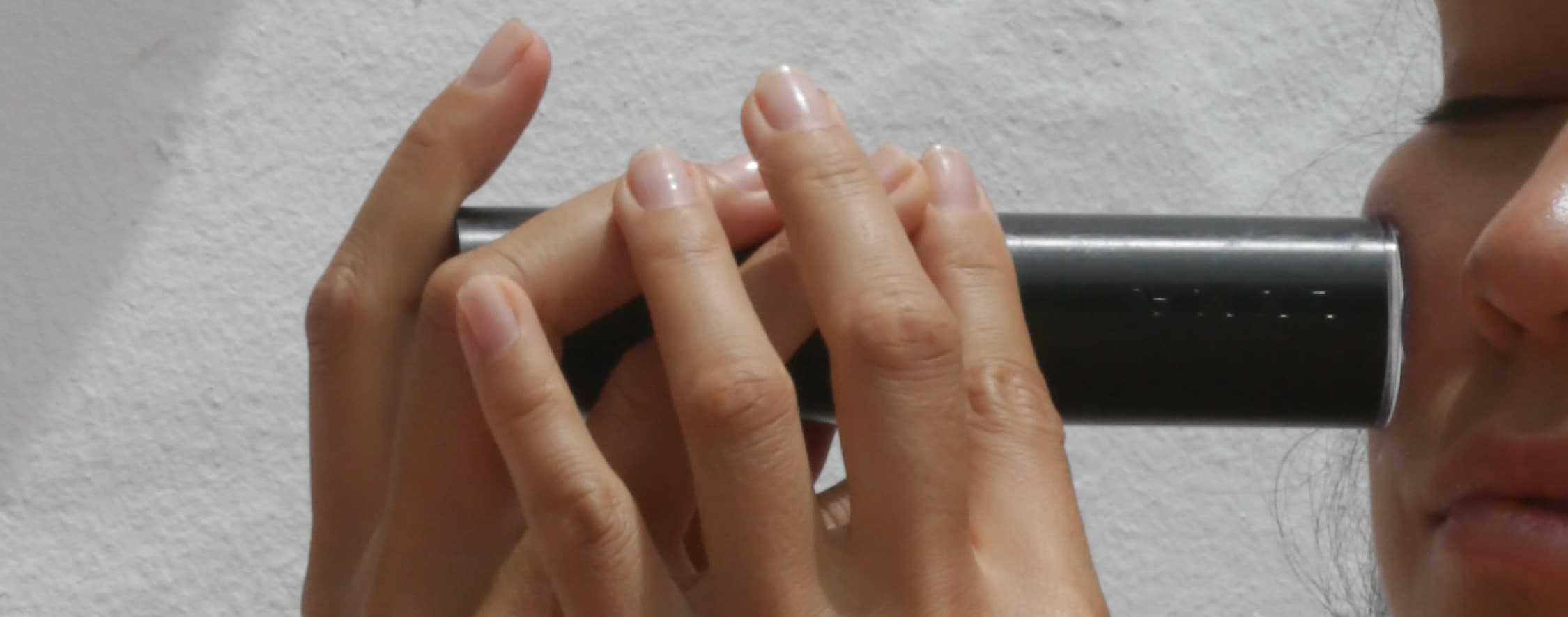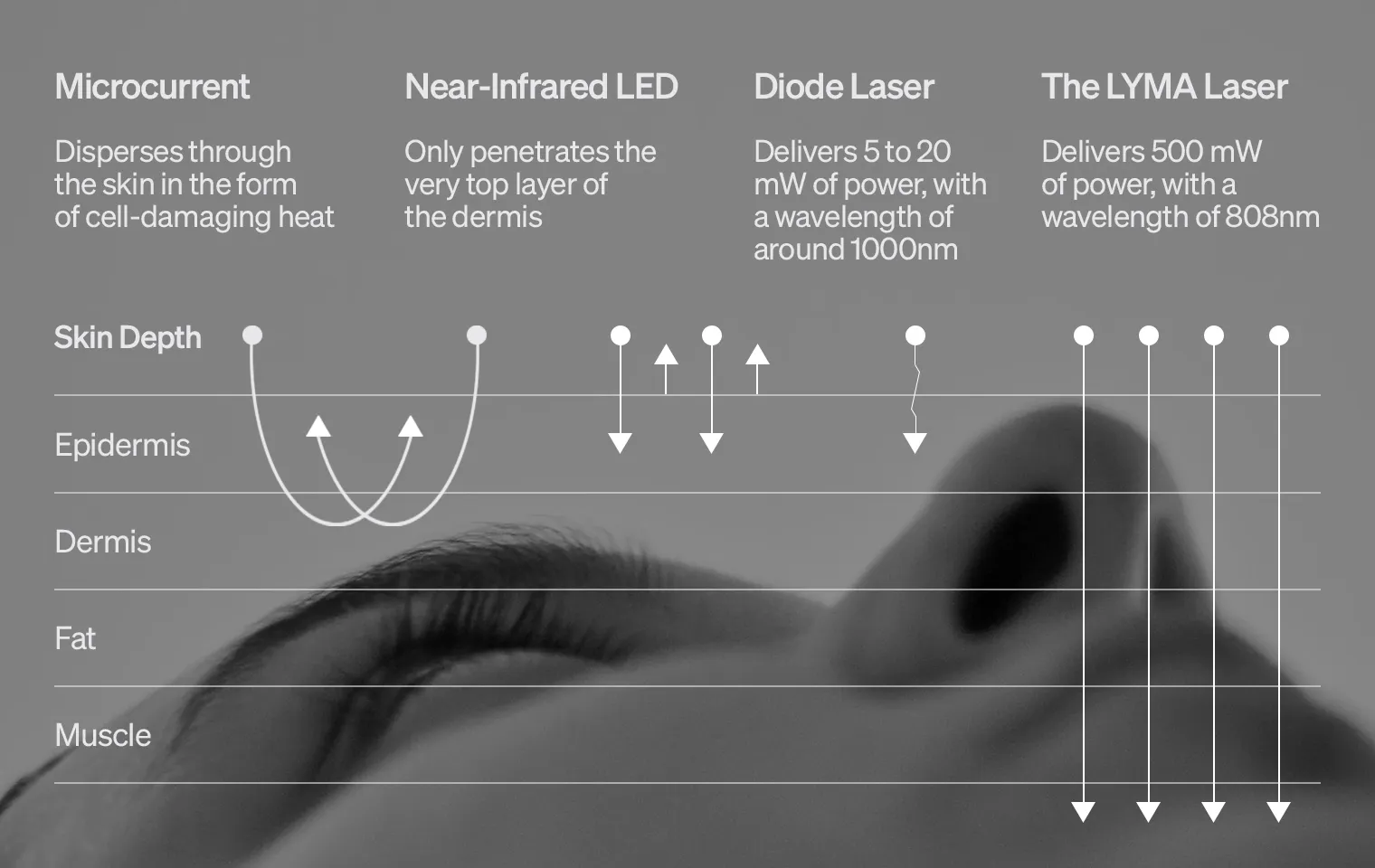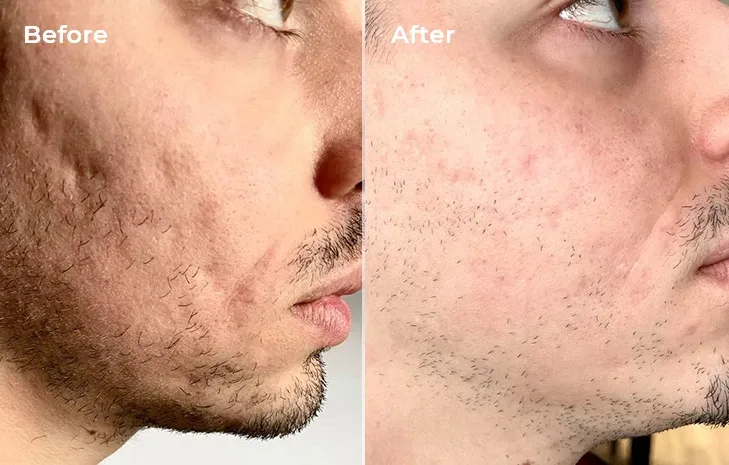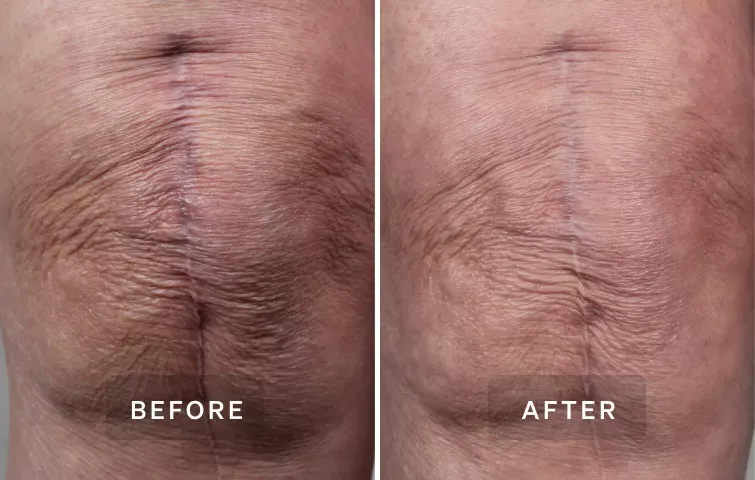10 Minute ReadEducation by Jess lacey (Reviewed by Dr. Graeme Glass)
13.05.22 (Updated 04.09.23)
Sometimes scars come with a profound psychological burden. This is especially true if your scarring links back to a traumatic incident. Or if you feel your scarring is negatively impacting your appearance and your perception of how others see you.
It’s easy to understand why scar removal treatments are growing in popularity. They make it possible to dramatically reduce the visibility of multiple types of scarring, empowering people to feel more confident. Let’s explore how scar removal treatment works.
In-clinic laser procedures fall into two categories: ablative and non-ablative.
Ablative laser resurfacing removes the thin, top layer of skin known as the epidermis and heats areas of the underlying dermis. This triggers the skin’s natural healing response, stimulating fresh collagen production in the dermis which makes the dermis thick and full and resurfaces the top layer with fresh epidermis, making the skin look smooth and tight. They work by targeting water which is present in and between cells.
The main types of ablative lasers are:
The Erbium:YAG laser is more water selective than the C02 laser, causing less collateral tissue damage. Both may be delivered in “fractional” way, leaving columns of untreated tissue between the treated areas. While this is less effective, recovery is faster.
Non-ablative lasers target the deeper layers of the skin only, without harming the outer epidermis. Targeted laser light is used to trigger the body to increase collagen production and heal the skin from the inside out.
The main types of non-ablative laser therapies are:
In short: ablative treatments remove the top layer of skin, while non-ablative treatments target underlying skin tissue only.
Finding out which laser is best for scars depends on multiple factors – including the type of scar you have, your budget and your pain tolerance. If, for example, you are wondering how to reduce the appearance of old scars, or how to reduce dark scars on your face, it’s best to research skin laser treatments for your specific circumstances.
As we discussed at the start of this article, there are many different types of in-clinic laser treatments. In-clinic laser procedures often require multiple sessions and vary wildly in terms of price and clinical efficacy – and they are not without risks. So it’s essential to do your research and always make sure you go to a reputable dermatological expert.
How many laser treatments are needed for scars? That depends on the type of treatment you are having and the severity of your scarring. What’s beyond doubt is that the more in-clinic treatments you have, the greater the risk of complications – such as post-treatment scarring, hyper-pigmentation and aggressive blemish breakouts. The intensity of fully ablative lasers can cause a lot of pain and discomfort.[9] And of course with clinical lasers there’s a risk to the eyes too.[10]
In-clinic laser scar treatments often require complex aftercare.[11] After a fully ablative procedure, skin is likely to be raw, bloodied, oozing and heavily scabbed. Someone may need to care for you in the first 24 hours of your recovery before you begin a regimen of rotating cold compresses multiple times per day. You may require time off work and will need to avoid sun exposure for up to two weeks after your treatment and minimise sun exposure thereafter. Recovery time is typically four to six weeks.
When you are considering different types of scar treatment, one of the key concerns is price. So how much does laser treatment cost? In short, that depends on the location and severity of your scarring, the type of laser used and the number of sessions required. It’s not unusual for the cost of laser scar removal to run into several thousands of pounds.[12]
Thanks to its unique ability to reignite collagen and elastin production, you can use the LYMA Laser which technology has been designed to maintain happy, healthy-looking skin. And of course there’s only the upfront fee to pay for the LYMA device, rather than the recurrent costs of in-clinic treatments.

In-clinic laser treatments can be invasive and painful. Some patients require anaesthetic and weeks of recovery time. It’s why there’s so much excitement for a new at-home laser scar removal treatment. But to understand its benefits, we need to discuss a technology called low level light therapy (LLLT).
Whereas most clinical lasers work by causing heat damage to elicit skin repair, LLLT harnesses light energy in a fundamentally different way. As the laser beam penetrates through the skin, laser light energy is converted to chemical energy in the battery pack of the cell (known as the mitochondria). In this high energy state, cells express genes that trigger tissue growth and regeneration; all without damaging the skin itself. The process is called photobiomodulation. It’s minimally invasive. It’s painless. And it’s clinically proven to stimulate skin rejuvenation.[1] [2] [3] [4]
While advanced dermatology clinics routinely offer LLLT, the prospect of accessing it at home is exciting. But at this point it’s crucial to understand the nuances of the at-home laser scar removal market. Because not all devices are created equal.
The majority of at-home skin repair devices work using LED light of specific wavelengths. That may help for treating surface-level blemishes, improving skin tone and reducing blemishes. But at-home LED devices don’t have the power to penetrate the skin in a way that harnesses the restorative effects of photobiomodulation in the same way that laser light can. In short: at-home LED is LLLT-lite. It’s why there is little peer-reviewed evidence to support LED’s effect on scars.[5]
There’s only one at-home skin repair device powerful enough to harness the potential for rejuvenation through photobiomodulation. And it’s LYMA’s world’s first at-home LLLT device. The LYMA Laser stimulates bio-transformational cellular renewal unlike anything else seen before. It’s been hailed by experts as the best scar removal treatment for people searching for a way to avoid costly clinical fees and repair their scars at home.
Technology comparison of most popular lasers on the market:

It’s natural to have questions when it comes to laser scar removal. Before and after testimonials from customers can help to demonstrate how the LYMA Laser reduces multiple types of scars – no matter how long you have been living with your scarring.
Acne doesn’t discriminate and can feel brutally unfair. Especially when it has left you with scarring. One study estimated that 0.7% of the UK population have severe acne scars.[7] That equates to around half a million people. The LYMA Laser stimulates collagen production to dramatically reduce acne scarring within the first few weeks. Read Penny’s review of the LYMA Laser here.

Target: 22 year-old woman with scarring caused by acne.
Results: After using the LYMA Laser on face skin and scars have faded.
Treatment: 10 minutes daily use, over 4 weeks.
Acne can cause several different types of scarring – including pitted scars and atrophic scars. There is insufficient evidence to support the use of clinical laser resurfacing to reduce acne scarring.[8] However the at-home LYMA Laser has been shown to reduce all types of acne scarring. Chris' acne scars were significantly reduced after using the LYMA Laser.

Target: 28 year-old man with pitted and atrophic scars caused by acne.
Results: Improved appearance of acne scars that have faded significantly.
Treatment: 15 minutes daily use, over 3 months.
While common and widely practiced, caesarean section is a significant procedure and scarring is typical. Using the LYMA Laser for just three minutes per day, over each section of the scar, for two months, has been shown to render c-section scars almost invisible.

Target: 8-year-old caesarean scar.
Results: Appearance of scar tissue has improved significantly.
Treatment: 3 minutes over each section of the scar, daily for two months.
Any breach in the surface of the skin to the level of the dermis causes scarring. But the quality of scarring can be modified and improved by effective post-operative scar management. The LYMA Laser offers a pain-free and effective method of post-surgical scar improvement, without the risks associated with using a fractional laser for surgical scars. Read this story to find out how Jillian used the LYMA Laser PRO on her scar.

Target: 1-year-old open-heart surgery scar on knee of 60-year-old woman.
Results: After 4 weeks the scar had already faded.
Treatment: 30-45 minutes daily for 1 month.
Stretch marks are pink or purple striae denoting rupture of the dermis without loss of the overlying epidermis. They result from rapid areas of skin stretch and are common in pregnancy, weight gain or during adolescent growth spurts. As they share many of the same features as scars, they are one of many skin complaints that the LYMA Laser can improve. Others include: wrinkles, sagging skin, cellulite, sunspots and skin redness.
Burn scars are unique and can be difficult to treat using traditional clinical techniques. However the LYMA Laser can reduce scarring and rejuvenate your skin at home.
Keloids are tumors of scar tissue that develop following trauma when your body works too hard to repair the skin and fails to switch off the process when the repair is achieved. The LYMA Lasers can transform keloid scars from raised and dark to a more flatter appearance, comfortable and smooth – without any pain or side effects, however it can take several months for the results to start showing.
The LYMA Laser is designed to fit around your schedule and your lifestyle. It’s cordless, portable and can be used anytime, anywhere.
Here’s the optimum step-by-step technique for getting the best results:
Step one: Spray six pumps of the LYMA Active Mist onto a cleansed face and neck, or onto the area you are treating. This provides a flood of oxygen to your skin and optimises the regeneration process.
Step two:
Once the LYMA Active Mist is fully absorbed, apply two pumps of the LYMA Glide serum to your face and neck, or the area you are treating. This serum acts as a conduit for the laser, hydrates the skin and reduces inflammation.
Step three: Gently glide the LYMA Laser across your skin following the natural contours of your face or body. Using the LYMA Laser for just three minutes per day, over each section of the scar, for two months has been shown to dramatically reduce visible scarring.
Imagine yourself at a medical research facility in Leipzig. A team of clinical experts are pioneering the use of lasers to treat internal injuries – such as degenerated cartilage and torn tendons. Then the physicians make an unexpected discovery. Their laser is dramatically improving patients’ skin: visibly transforming wrinkles, pigmentation issues, blemishes and scarring.
It was precisely this chain of events that led to the creation of the LYMA Laser.
Safety should always be one of the key aspects of any cosmetic treatment – either at home or in clinic. That’s especially true when it comes to laser treatments. The LYMA Laser has been rigorously tested. It delivers the light required for photobiomodulation to occur: monochromatic, collimated, coherent[6] and polarised near infra-red 500mW laser light. This enhances the production of collagen and elastin within the dermis and increasing the turnover of epidermal skin cells, all of which has a rejuvenating effect on the skin’s outward appearance.
Perhaps best of all the LYMA Laser is pain free. Most clinical laser procedures work by damaging the skin to trigger the repair process. But with the LYMA Laser there’s no skin damage at all. Using the device, whether it is the LYMA Laser or the Laser PRO, is completely painless (even around the eyes’ area), with no side effects and zero risk of infection, scabbing or reddening. Demonstrably safe for use as an at-home permanent scar removal treatment.
It can feel hard to live life to its fullest when scarring is causing a psychological burden. Yet it’s possible to dramatically reduce the visibility of your scarring thanks to a range of cosmetic procedures. The go-to treatment for most dermatologists is laser therapy. And thanks to LYMA Lasers you can now access the benefits of laser therapy at home, without the pain and recovery time that’s associated with in-clinic procedures.